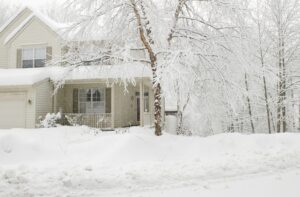
We need to address a rather complicated question that comes from our community. If your gas furnace heats your home by burning fuel with a flame, then why is it not supposed to make smoke? And where do all of the fumes and smoke that are produced go?
These aren’t amateur questions, we respect anyone who is willing to learn about the heating process and the intricacies of their home. In this case, we need to start with the simplest question and get more complex from there. What is smoke? And why does it come from burning different types of fuel sources?
Then, we’ll move into the vital conversation as to whether or not you need furnace repair in Bigfork, MT. If your furnace is smoking, the simple answer is yes, but we urge you to keep reading to learn more about this complicated issue.
Contact the experts today for more info!
The Chemical Composition of Smoke
Before we talk about why you should or shouldn’t be seeing smoke in your home, let’s talk about the composition of smoke. Whenever a substance is burned, there are usually a whole host of byproducts from the combustion that release into the air. This is why incinerating our waste can lead to pollution, since that burning releases lots of fumes into our atmosphere that we can end up breathing in to the detriment of our personal health.
Combustion leads to a variety of particles being sent into the air. The first, and most obvious byproduct is smoke, which is atomized carbon and other molecules of the original fuel that have been incinerated. Then, you’ve got water vapor, since any water that would have been in the fuel source is heated and evaporated. Next, you’ve got other materials like carbon monoxide, carbon dioxide, and trace elements of toxins that might be released depending on the fuel source you’re burning.
Basically, smoke is just one small component of a large system of particles released into the air when something is burned.
Burning Gas Is Different Than Burning Wood or Coal
When you burn gas, you’re getting a different byproduct than when you burn wood or coal. Burning wood, for example, release a lot more water vapor and smoke than burning gas, because wood contains more water and carbon than gas does. These materials don’t disappear when they’re burned, they’re released into the air as gas!
Therefore, when you burn gas in your furnace, you’re probably going to release more carbon monoxide, carbon dioxide, and water vapor than you would actual “smoke.”
Smoke and Exhaust Should Be Vented Through the Port
All of these facts considered, you should never be encountering smoke, carbon monoxide, or any fumes from your furnace inside your home. These fumes should always be exhausted through the exhaust port of your home, which is the small exit that you can probably see on the side of your home. In the wintertime, it can be surrounded by ice since the hot fumes melt the snow around it, creating pretty icicles.
If you are detecting smoke or exhaust fumes in your home, then something is very clearly wrong. There could be a crack in your system, or some kind of malfunction that’s giving you issues. Turn off the system and call our team for support.

